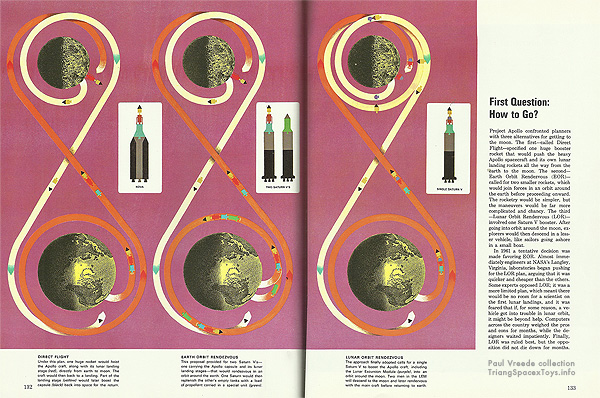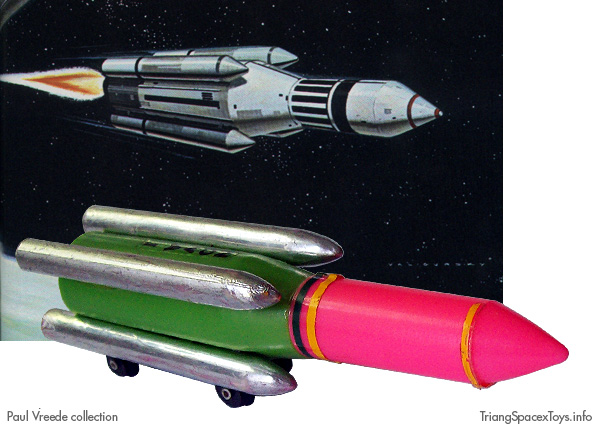
The Nova Rocket is based on another illustration by Ed Valigursky from the Man and Space book, published by Time Life in 1962. As the accompanying text explains, "even bigger rockets will follow Saturn V. A dozen or more designs, with the generic name of Nova, are under consideration." At the time the book was written, this was still true - NASA was expecting to undertake manned missions to Mars after having been to the Moon, and the Saturn V that was sufficient for reaching the Moon wouldn't suffice for a longer trip to Mars with a heavier payload.
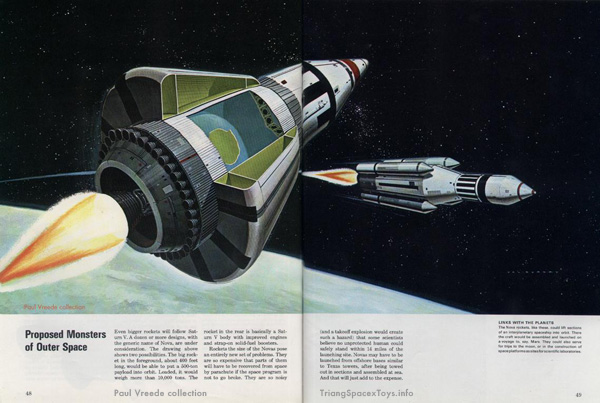
Studies for a larger Nova rocket had initially been undertaken by NASA in the late 1950s, with subsequent input from various aerospace contractors. The aim at this time was reaching the Moon, and the need for larger rockets has to be seen in comparison to the earlier, less powerful versions of the Saturn rocket. Other considerations were also playing a part, notably the difference between liquid and solid fuel, and especially the best way the Moon would be reached.
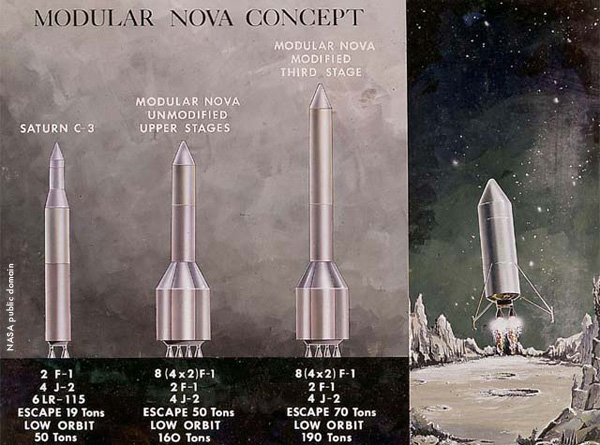
An early Nasa concept illustration comparing an early Saturn rocket with proposed Nova designs. Note the difference in engines (F-1, J-2 and LR-115 are various types of
Rocketdyne engines, listed per stage).
As another illustration in Man and Space explains (below), there were three alternative ways to get there. The first was Direct Flight, in which the entire rocket (minus boosting stages) would land on the Moon and take off again to return (the concept illustration from NASA above also includes this option). As is indicated in the illustration below, this was the scenario that would require a larger Nova rocket.
The second alternative, initially favoured by Wernher von Braun, was called Earth Orbit Rendezvous, where two or more Saturn boosters would bring components into Earth orbit, to be assembled before heading to the Moon.
The final alternative was Lunar Orbit Rendezvous, where a single Saturn would boost a Command Module and Lunar Lander into space, after which these would fly to the Moon and assemble while in orbit around it.
The LOR procedure was perceived to be the most complicated to perform, and risky should anything happen far away from Earth. But, after lengthy calculations of the alternatives, a study group came out in favour of this option as being the least complicated or costly to build and get underway. Saving time had now become important too, since President Kennedy had made the public promise to reach the Moon before the decade was out.
Meanwhile, the Saturn rocket had continued to evolve, with more engines being added to increase payload. Which meant that in the end, the Saturn V could do what the Nova had been intended for several years earlier, and with existing facilities could be made ready somewhat quicker as well.
With the means of reaching the Moon decided upon, the Nova project entered a second phase, again for a larger rocket than the then-current Saturn V, with a possible Mars mission in mind. Study contracts were awarded to Martin Marietta and to General Dynamics (actually the former Convair company, which had brought aerospace expertise to General Dynamics after merging in 1953), with Douglas joining in while funding their own research.
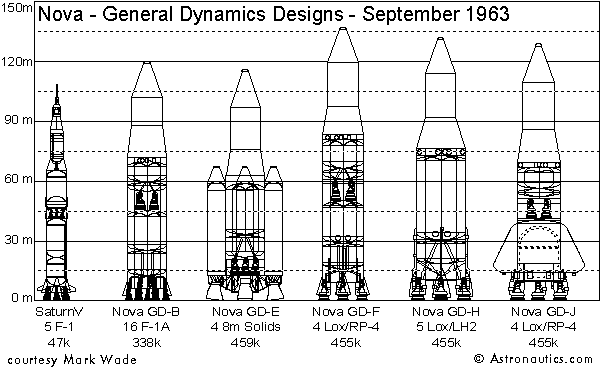
Hefty studies and over a dozen and a half designs were submitted to NASA, and it is the General Dynamics Model E design that Valigursky chose to illustrate (as well as the Helios design by Douglas seen in the foreground at left).
But sadly, a mission to Mars never happened. With attention changing to re-usable spacecraft (not to mention the cost of the war in Vietnam), the Nova project was shelved not long after the Man and Space book was published.
Cereal cousin
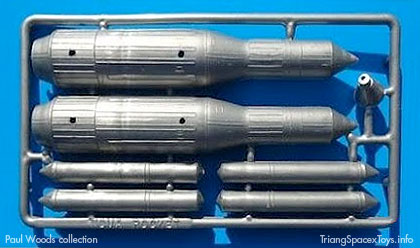
R&L from Australia produced a mini-kit of the Nova Rocket in the later 1960s for their range of cereal premium space kits. It was however not included in the series of six R&L space toys offered by Kellogg's in the UK in 1968 (see Molab origin page).
The line illustration above is by Mark Wade (gratefully used according to his terms), from the entry on the Nova (opens in new window) on his outstanding Astonautix.com - a huge encyclopedia on the history of spaceflight, and by far the best place to start or verify research on anything in this field.
